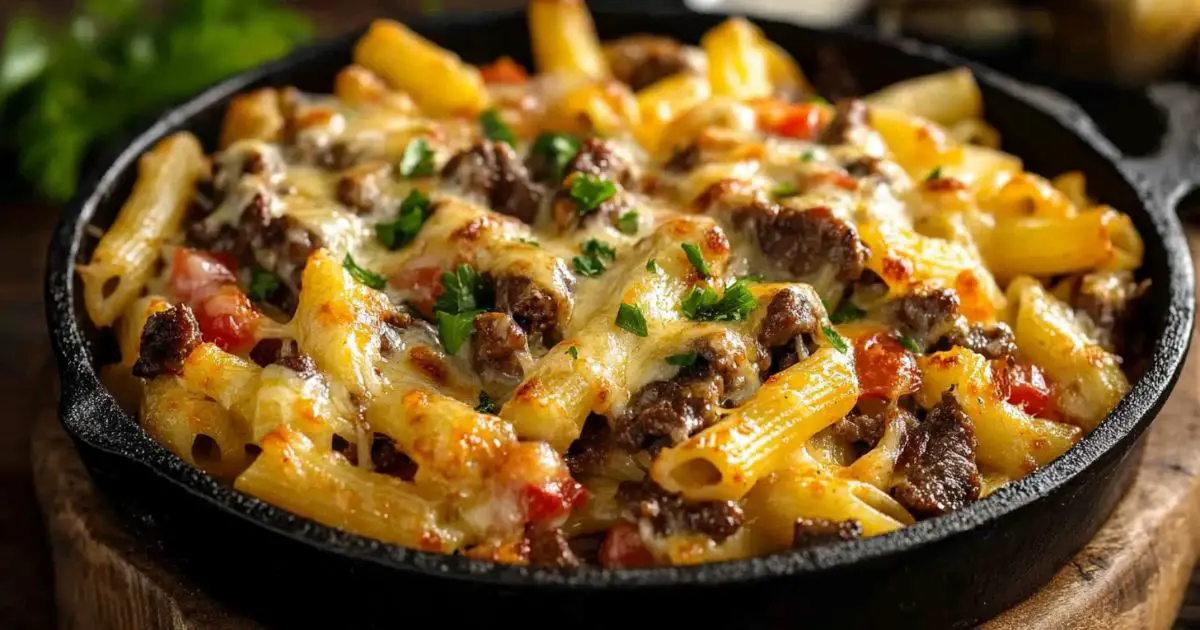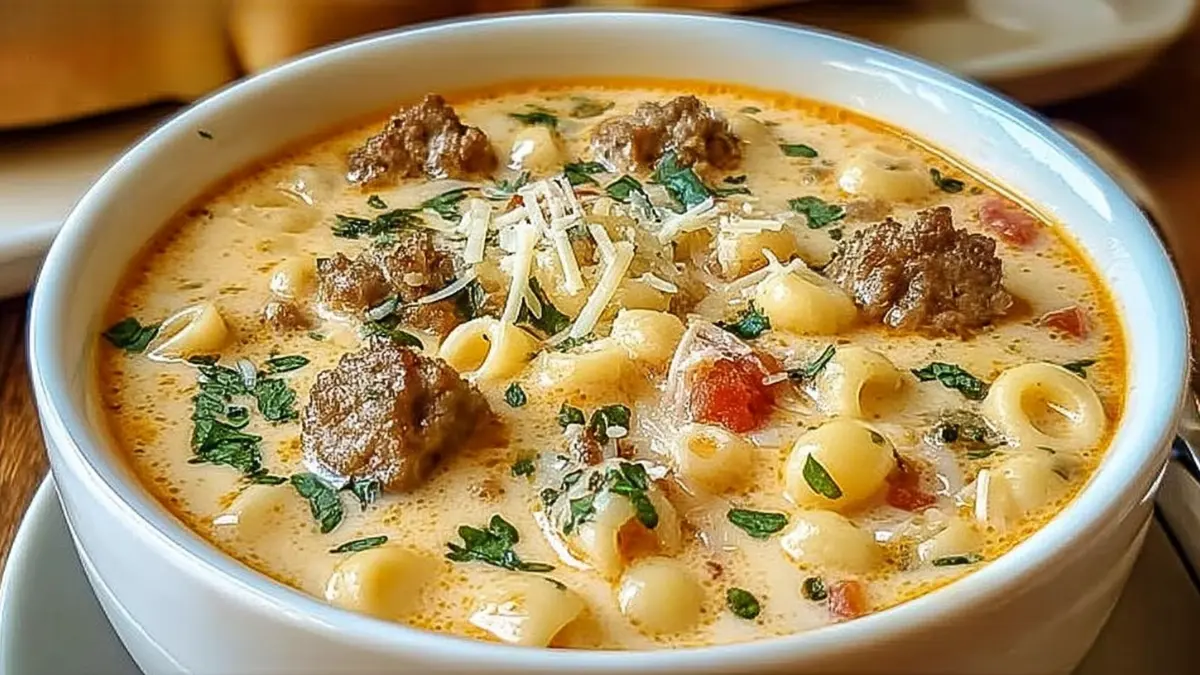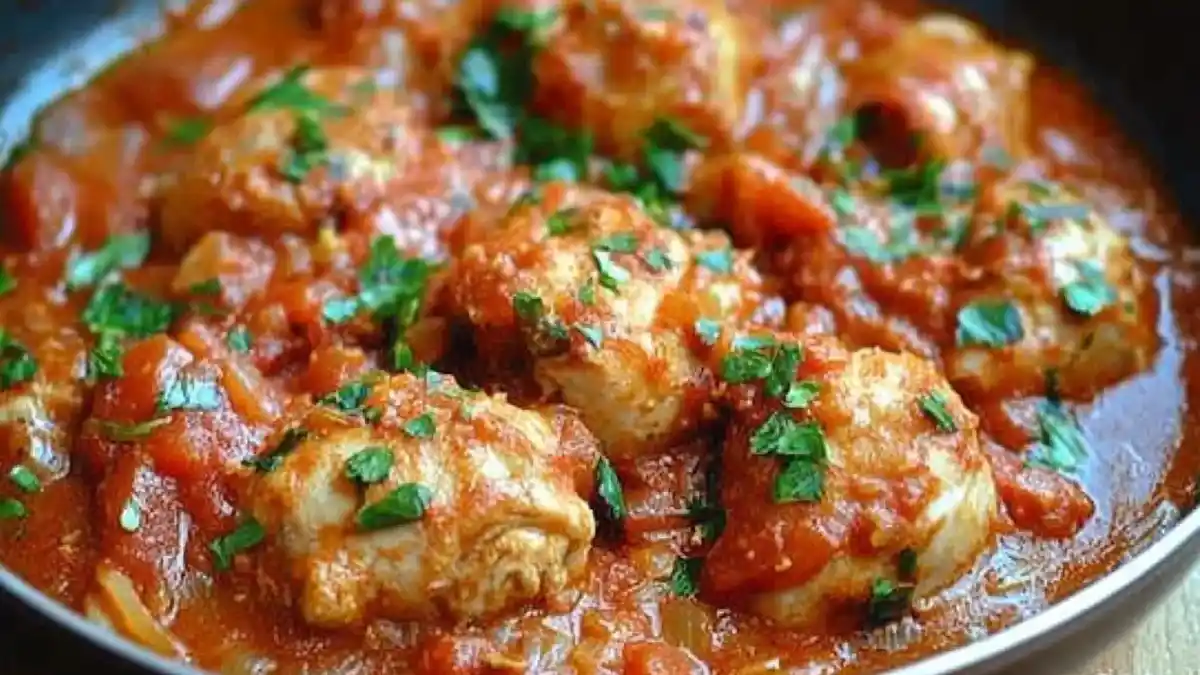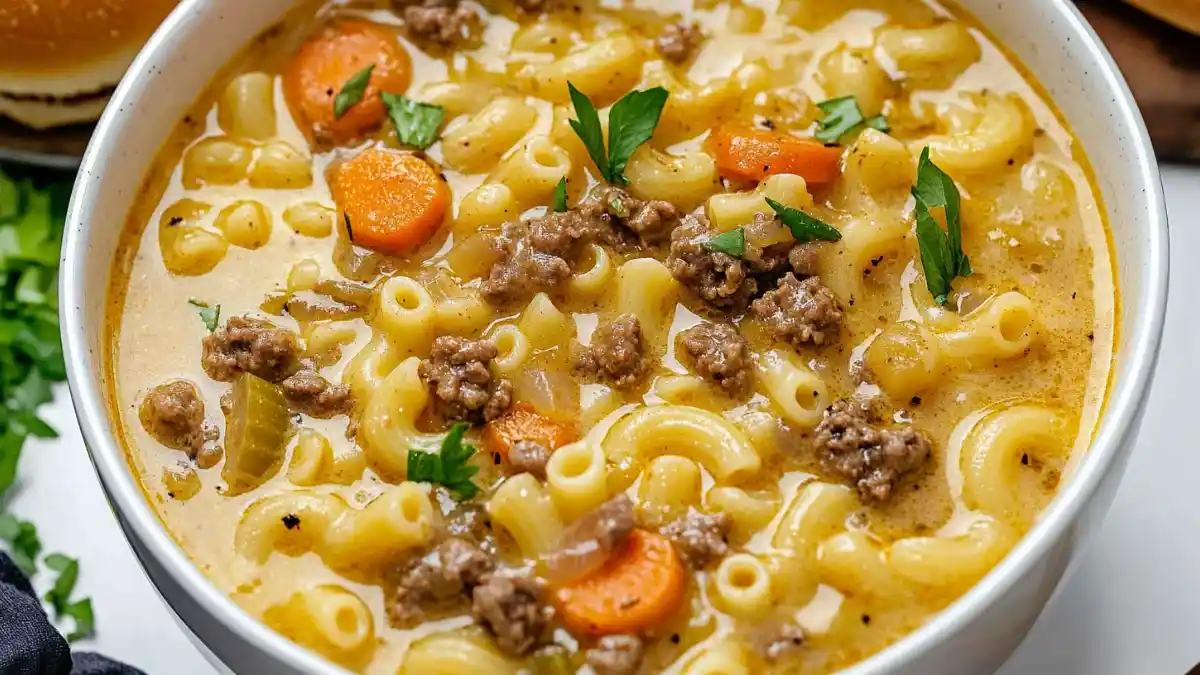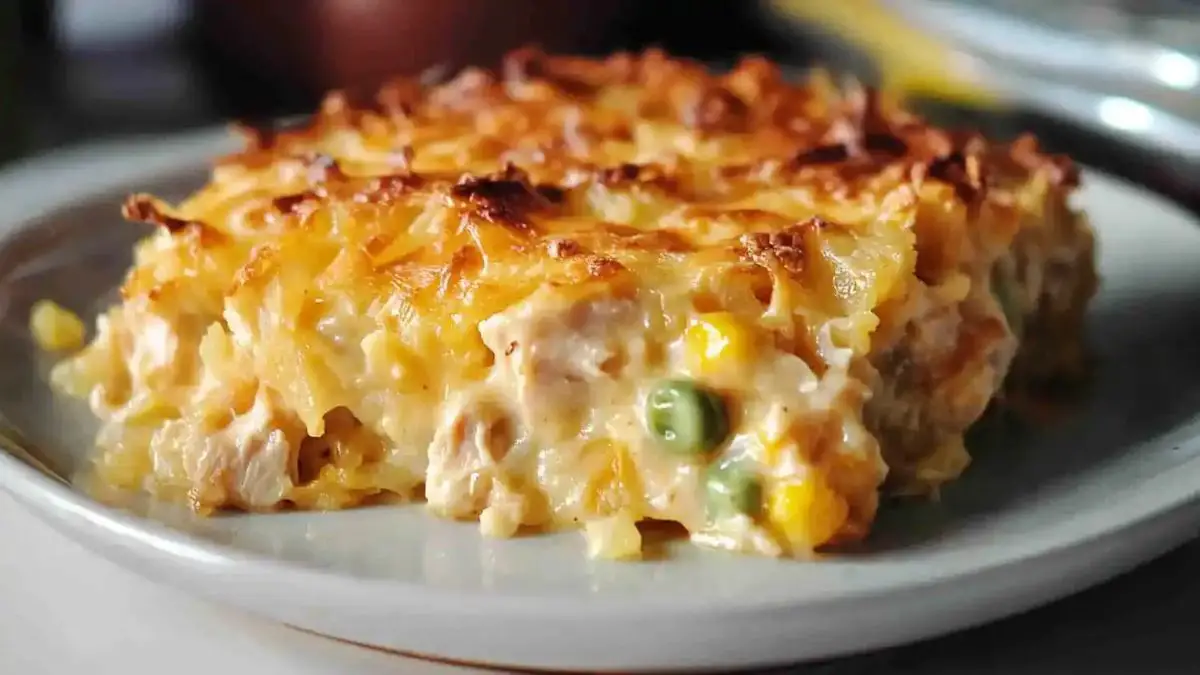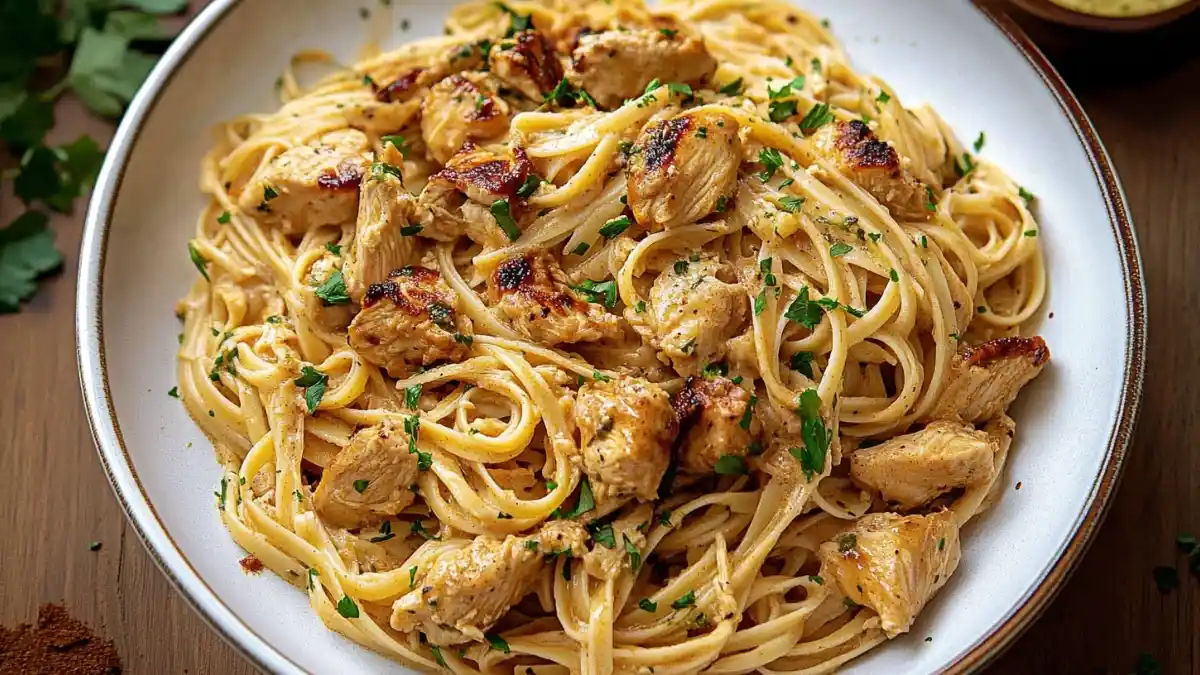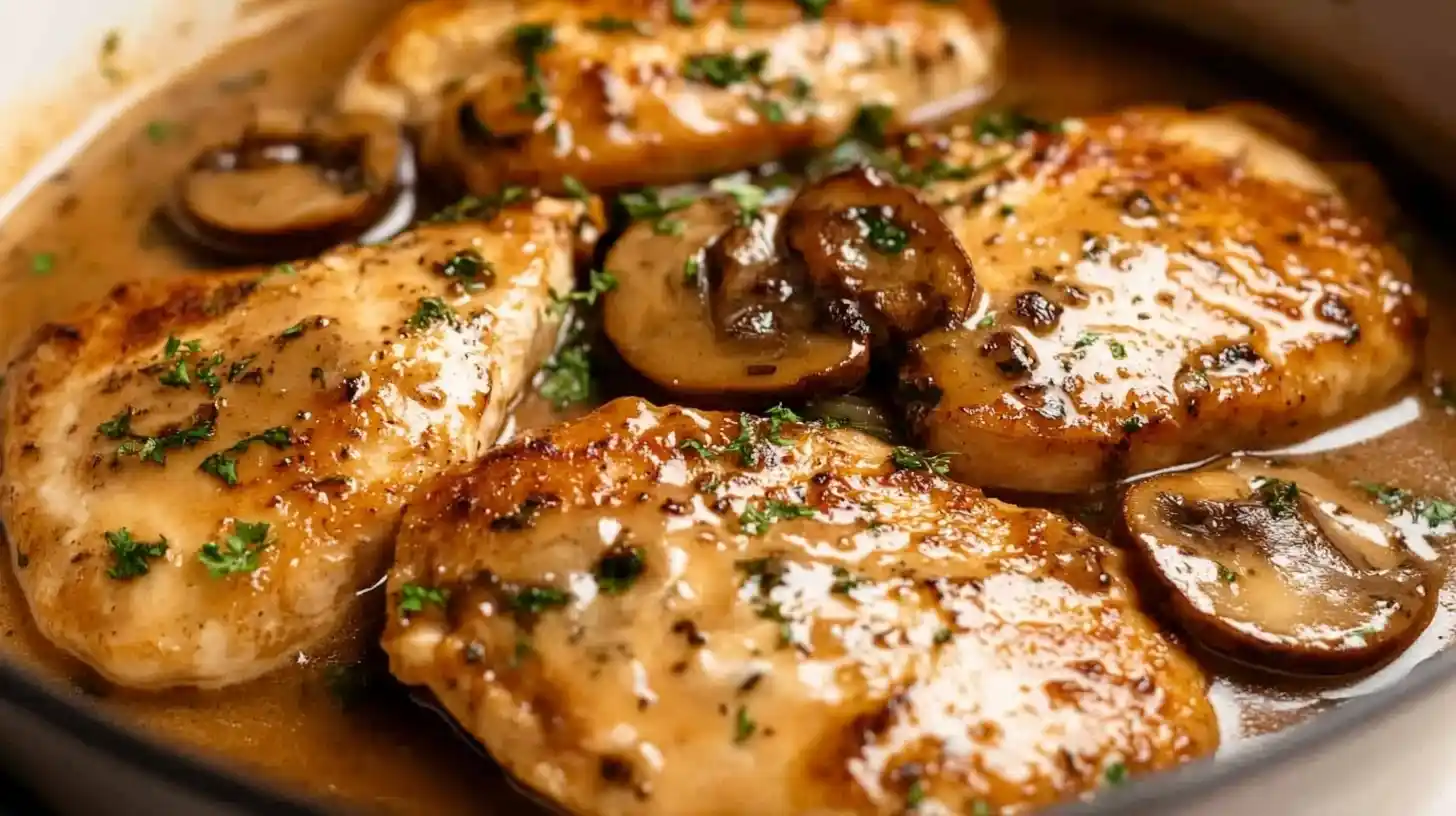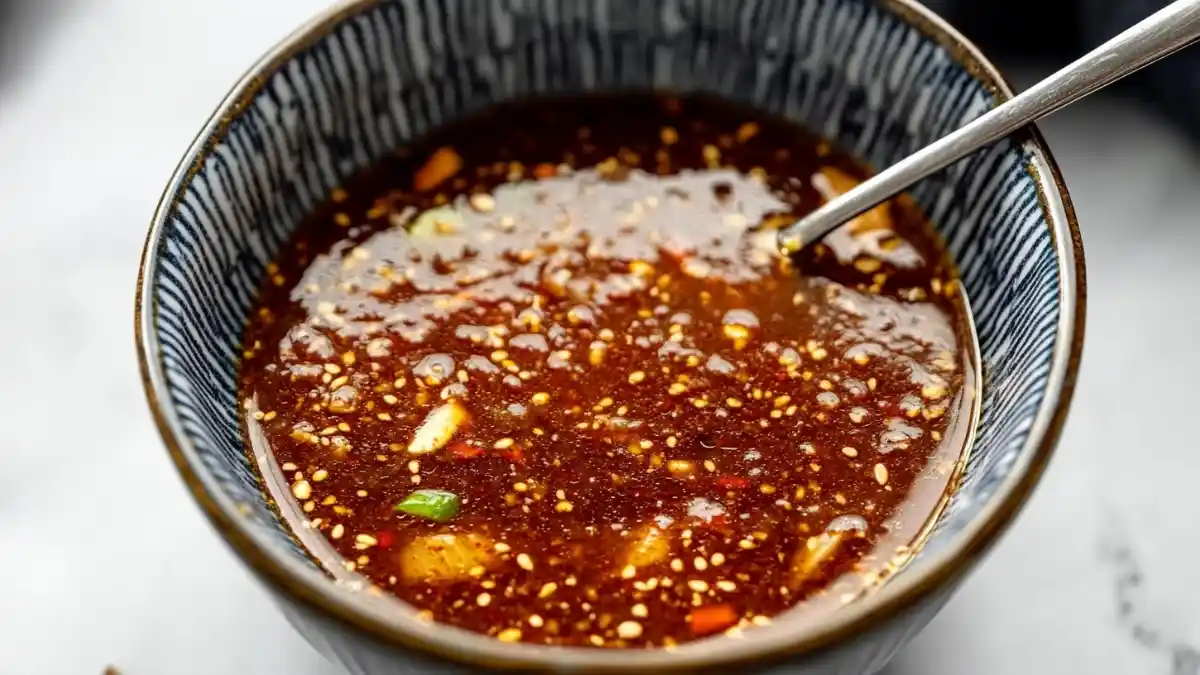Philadelphia is admired worldwide for its cheesesteak, a sandwich consisting of thinly sliced beef paired with cheese on a roll. Locals embrace it as a treasured part of their culture. Visitors often seek out neighborhood diners and vendors to sample this food. According to the Philadelphia Official Tourism Site, the cheesesteak stands as one of the city’s quintessential must-try dishes, showcasing its deep ties to local gastronomy.
Although the original version is typically served in a long roll, home cooks have found playful ways to adapt this classic. One creative path is combining the famous flavor of the cheesesteak with pasta. This approach preserves the essential tastes—beef, peppers, onions, and melted cheese—while wrapping them in a comforting bowl of noodles. Imagine a plate of tender steak strips, sautéed peppers, onions, cheese sauce, and perfectly cooked pasta. That’s the idea behind Philly Cheesesteak Pasta.
The journey to create Philly Cheesesteak Pasta involves balancing hearty steak, bright peppers, and cheese to achieve a cozy dish with broad appeal. It’s especially popular on weeknights when time is limited, but families still crave something memorable. Below, you will find a complete guide, including ingredients, preparation methods, tips, and more. Whether you’ve enjoyed a cheesesteak before or are new to it, this recipe offers a fresh perspective.
Why You’ll Love This Recipe
- Comfort in Every Bite
Picture the creamy taste of melted cheese swirling around tender pasta, mixed with savory sautéed beef, peppers, and onions. It feels like comfort food but boasts enough flavor to stand out from everyday meals. - Simple to Make at Home
Despite looking fancy, the steps remain straightforward. Gathering a few essential elements and following basic cooking methods is all it takes. Everything comes together in one pot or pan (with occasional transfers), minimizing cleanup. - Flexible for Different Preferences
While the essence of the dish is timeless, there’s space to add personal flair. Some might opt for milder cheese, while others reach for spicier peppers. Adjusting the seasonings or swapping the pasta shape can tailor the final product to individual tastes. - Great for Gatherings
Need a dish to serve guests without fuss? This one has you covered. It presents well in a buffet setting, remains delicious even if it cools slightly, and can easily be reheated. - Nostalgic yet Modern
By blending the iconic flavors of a Philly cheesesteak with pasta, you get the best of both worlds. Traditional supporters of the sandwich can still enjoy that signature taste, while pasta enthusiasts welcome a unique spin.
Ingredients
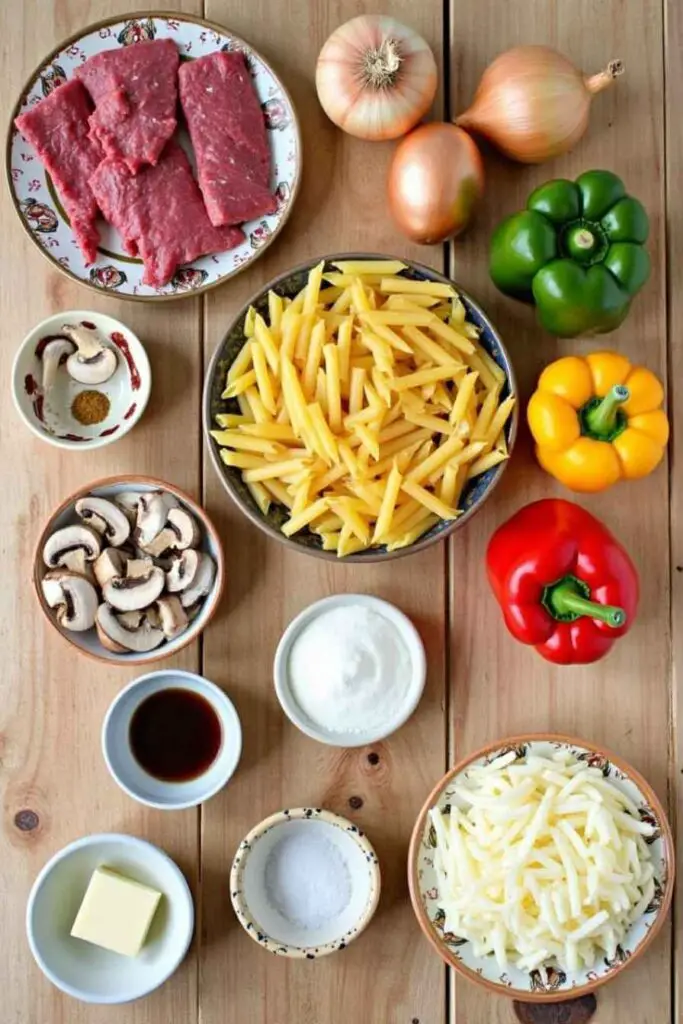
Below is a comprehensive list of ingredients used in this recipe. Feel free to adjust quantities based on your preference or dietary needs, but these measurements create a harmonious balance.
- Steak (1 to 1½ pounds)
- Common choices include ribeye or sirloin, sliced thinly to mimic the original sandwich. A quick tip: partially freezing the beef for 20 to 30 minutes can help achieve cleaner slices.
- Pasta (16 ounces)
- Medium shapes like penne, rigatoni, or shells work best. They hold sauce in every curve, ensuring each bite delivers maximum flavor.
- Bell Peppers (2, medium-sized)
- Green bell peppers reflect a more classic cheesesteak. Red or yellow peppers can add a sweet touch and vibrant color.
- Onions (1 large)
- Traditional Philly cheesesteak usually features onions. A sweet or yellow onion suits this recipe well, adding a pleasant depth without overpowering.
- Mushrooms (Optional, 1 cup sliced)
- Some modern cheesesteak-inspired creations feature mushrooms for added texture. Including them is a personal choice.
- Garlic (2 to 3 cloves, minced)
- Although the standard cheesesteak formula often sticks to onions and peppers, garlic adds an aromatic lift to the dish.
- Beef Broth (2 cups)
- This element forms the base of the sauce, enhancing the flavors of the steak. Look for low-sodium varieties if you want to manage salt intake.
- Heavy Cream (1 cup)
- Contributes a smooth texture that helps blend everything into a velvety sauce.
- Cream Cheese (4 ounces)
- Creates a rich backbone that complements the beef and peppers. Also helps the sauce thicken.
- Provolone or Cheddar Cheese (2 cups, shredded or sliced)
- Traditional cheesesteaks often rely on Provolone or Cheez Whiz, but Cheddar is also popular. You can mix and match to get the cheese pull you desire.
- Oil or Butter (2 tablespoons)
- Use neutral oil (like vegetable or canola) or butter for sautéing. Both options yield a pleasant flavor.
- Salt and Pepper (to taste)
- Essential for seasoning the steak, vegetables, and sauce. Adjust according to your preference.
- Optional Garnishes
- Fresh parsley or chopped scallions. These add a pop of color and freshness when sprinkled on top.
How to Make Philly Cheesesteak Pasta Recipe
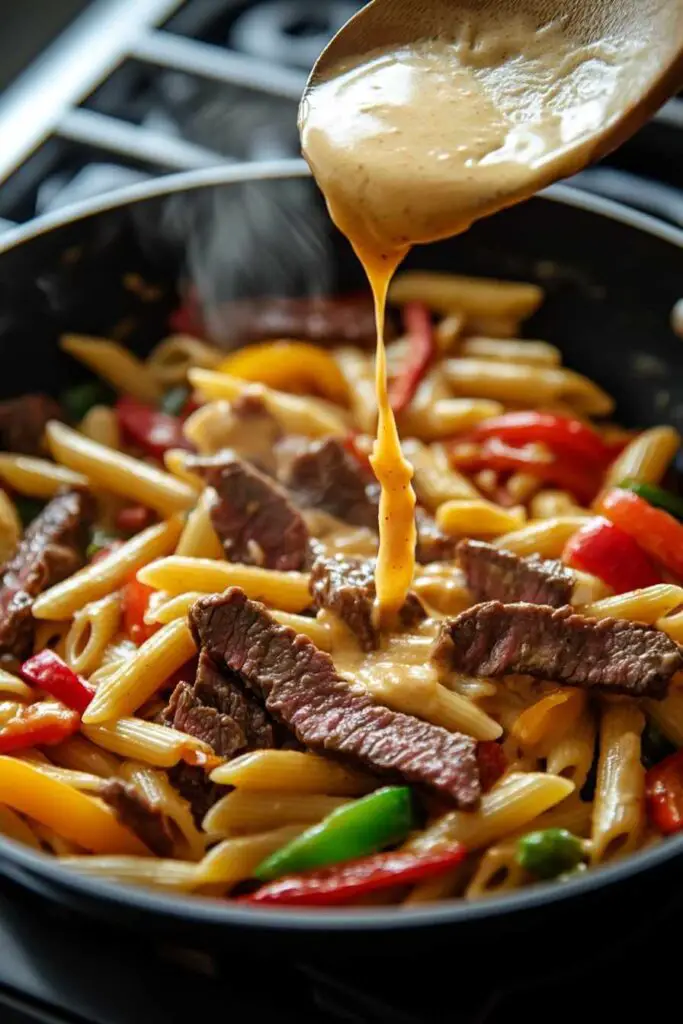
Step 1: Prepare and Slice the Beef
- Select the Right Cut
Ribeye offers a tender bite that matches the classic sandwich. Sirloin is often more budget-friendly and still works well. - Slice with Care
Partially freeze the beef before slicing to ensure thin, uniform pieces. Aim for strips about 1 to 2 inches in length.
Step 2: Chop the Vegetables
- Peppers
Seed and slice the bell peppers into strips. Keep them somewhat thin so they cook quickly and incorporate well. - Onions
Slice onions into half-moons or strips. They should match the peppers in thickness for even cooking. - Mushrooms (Optional)
Rinse quickly under cold water, then pat dry. Slice to a similar thickness as the peppers and onions if you choose to include them.
Step 3: Sauté the Beef
- Heat the Pan
Add about 1 tablespoon of oil or butter to a large skillet over medium-high heat. - Cook in Batches
If the skillet is crowded, the steak will steam instead of browning. Work in smaller portions to get a good sear. Sprinkle with salt and pepper. Stir occasionally to ensure all sides cook evenly. Transfer browned strips to a plate and set aside.
Step 4: Cook the Vegetables
- Using the Same Skillet
The leftover drippings from the beef add flavor. You can add another tablespoon of oil or butter if needed. - Add Onions and Peppers
Place onions and peppers in the skillet. Stir regularly to prevent sticking, but allow them to soften. Season with salt and pepper. - Include Mushrooms (Optional)
If using mushrooms, add them once onions and peppers have softened a bit. Mushrooms release water, so be patient until they cook down. - Garlic
Stir in minced garlic near the end. Garlic can burn quickly, so give it about 30 seconds to 1 minute in the pan.
Step 5: Combine Beef and Vegetables
- Reintroduce the Steak
Once vegetables reach the desired tenderness, return the cooked beef to the skillet. Stir to unite flavors. - Taste and Adjust
Add more salt, pepper, or other seasonings if you prefer. Some folks like a dash of Worcestershire sauce. Others might add red pepper flakes for mild warmth.
Step 6: Craft the Sauce
- Pour in Beef Broth
Deglaze the skillet by pouring in beef broth. This process helps loosen any flavorful bits stuck to the bottom. - Blend in Heavy Cream
Stir gently to mix in the cream, letting it warm and combine with the broth. - Cream Cheese
Lower the heat to medium. Add cream cheese in small chunks, whisking until it fully melts. This step gives the sauce a velvety texture. - Incorporate Shredded Cheese
Whether you choose Provolone, Cheddar, or a combination, sprinkle it in gradually. Stir so it melts evenly and creates a cohesive sauce.
Step 7: Cook the Pasta Separately
- Boil Pasta
Fill a large pot with water and bring it to a boil. Add salt to the water for flavor. - Follow Package Directions
Cook pasta until it’s just shy of al dente (a slight bite remains). This approach keeps the pasta from becoming mushy once mixed with the sauce. - Drain
Reserve a small amount of pasta water (about half a cup) in case you want to thin the sauce later. Then drain the pasta thoroughly.
Step 8: Merge Pasta and Sauce
- Add Pasta to the Sauce
Transfer the cooked pasta into the skillet with the steak, peppers, onions, and sauce. Stir gently to coat every piece of pasta. - Adjust Consistency
If the sauce feels too thick, add a splash of the reserved pasta water. If it’s too thin, let it simmer a bit longer to reduce. - Taste Once More
Give it one final taste test. Add salt, pepper, or a sprinkle of cheese to fine-tune.
Serving and Storage Tips
Serving Suggestions
- Herb Garnish
A sprinkle of fresh parsley or scallions boosts the look and adds a hint of freshness. - Family-Style
Serve from a large skillet at the center of the table. Let everyone help themselves, creating a warm atmosphere. - Accompaniments
Consider a side of roasted vegetables or a crisp green salad. Garlic bread can also be a fun addition if you’re hosting a crowd.
Storage Tips
- Refrigeration
Place leftovers in an airtight container and store in the fridge for up to three days. - Reheating
Warm gently in a skillet over low to medium heat, adding a splash of broth or milk if needed. Stir occasionally to avoid sticking. - Freezing
While freezing is possible, the sauce may separate upon thawing due to the dairy content. If you do freeze, consider reheating slowly and whisking vigorously to help reincorporate the sauce.
Helpful Notes
- Choice of Steak
If ribeye seems too expensive, try top sirloin or flank steak. Proper slicing and seasoning ensure a tender bite. - Cheese Options
Provolone matches the traditional Philly sandwich. Alternatively, Cheddar offers sharpness, while mozzarella lends extra melt. Mixing different cheeses can produce new layers of flavor. - Thickening or Thinning
Cream cheese helps the sauce stay thick and smooth. If you’d like a thinner sauce, use more broth or add a bit of milk. - Avoid Overcooking
Overcooking the pasta or steak can dull the overall enjoyment. Keep an eye on cooking times and test textures as you go. - Customize Seasonings
Beyond salt and pepper, some folks sprinkle in onion powder, paprika, or a mild steak seasoning blend. Tread lightly to avoid overwhelming the cheesesteak essence. - Halal-Friendly Adaptations
Philly Cheesesteak is typically made from beef, so it fits well for those avoiding pork. Double-check labels on cheese or broth to confirm they meet any dietary needs. - Source of Inspiration
For the origins of the cheesesteak itself, the Philadelphia Official Tourism Site provides interesting background stories. It’s a helpful resource for understanding the cultural connection behind this comfort dish.
Conclusion
Philly Cheesesteak Pasta brings together a well-loved sandwich and the universal appeal of noodles. This dish captures the spirit of the original cheesesteak—savory steak, onions, peppers, and rich cheese—while weaving them into a one-pan meal that’s easy to prepare. It’s perfect for a quick dinner or for entertaining friends with a twist on a beloved American classic.
The best part? The recipe is flexible. You can adjust it based on your preferences, making it lighter or creamier, spicier or milder. With straightforward steps, a handful of ingredients, and a dose of creativity, this meal can brighten your weekly menu rotation. Sauté, season, stir, and watch as these elements transform into a memorable plate. If you’ve ever wondered how to elevate a standard pasta dinner, here’s your answer.
When you need hearty flavors without an excessive list of ingredients, Philly Cheesesteak Pasta stands ready. Whether you’re treating family or planning a no-fuss gathering, it strikes the right note every time.
______________________________
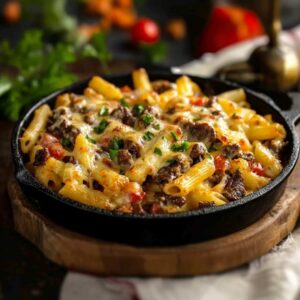
Philly Cheesesteak Pasta Recipe
Ingredients
- 1 to 1½ pounds steak ribeye or sirloin, thinly sliced
- 16 ounces pasta penne, rigatoni, or medium shells
- 2 medium-sized bell peppers green, red, or yellow, sliced
- 1 large onion sliced into half-moons
- 1 cup mushrooms optional, sliced
- 2 to 3 garlic cloves minced
- 2 cups beef broth low sodium preferred
- 1 cup heavy cream
- 4 ounces cream cheese cubed
- 2 cups shredded Provolone or Cheddar cheese
- 2 tablespoons butter or oil for sautéing
- Salt and pepper to taste
- Optional garnishes: chopped parsley or scallions
Instructions
Step 1: Prepare and Slice the Beef
- Select the Right Cut: Ribeye offers a tender bite that matches the classic sandwich. Sirloin is often more budget-friendly and still works well.
- Slice with Care: Partially freeze the beef before slicing to ensure thin, uniform pieces. Aim for strips about 1 to 2 inches in length.
Step 2: Chop the Vegetables
- Peppers: Seed and slice the bell peppers into strips. Keep them somewhat thin so they cook quickly and incorporate well.
- Onions: Slice onions into half-moons or strips. They should match the peppers in thickness for even cooking.
- Mushrooms (Optional): Rinse quickly under cold water, then pat dry. Slice to a similar thickness as the peppers and onions if you choose to include them.
Step 3: Sauté the Beef
- Heat the Pan: Add about 1 tablespoon of oil or butter to a large skillet over medium-high heat.
- Cook in Batches: If the skillet is crowded, the steak will steam instead of browning. Work in smaller portions to get a good sear. Sprinkle with salt and pepper. Stir occasionally to ensure all sides cook evenly. Transfer browned strips to a plate and set aside.
Step 4: Cook the Vegetables
- Using the Same Skillet: The leftover drippings from the beef add flavor. You can add another tablespoon of oil or butter if needed.
- Add Onions and Peppers: Place onions and peppers in the skillet. Stir regularly to prevent sticking, but allow them to soften. Season with salt and pepper.
- Include Mushrooms (Optional): If using mushrooms, add them once onions and peppers have softened a bit. Mushrooms release water, so be patient until they cook down.
- Garlic: Stir in minced garlic near the end. Garlic can burn quickly, so give it about 30 seconds to 1 minute in the pan.
Step 5: Combine Beef and Vegetables
- Reintroduce the Steak: Once vegetables reach the desired tenderness, return the cooked beef to the skillet. Stir to unite flavors.
- Taste and Adjust: Add more salt, pepper, or other seasonings if you prefer. Some folks like a dash of Worcestershire sauce. Others might add red pepper flakes for mild warmth.
Step 6: Craft the Sauce
- Pour in Beef Broth: Deglaze the skillet by pouring in beef broth. This process helps loosen any flavorful bits stuck to the bottom.
- Blend in Heavy Cream: Stir gently to mix in the cream, letting it warm and combine with the broth.
- Cream Cheese: Lower the heat to medium. Add cream cheese in small chunks, whisking until it fully melts. This step gives the sauce a velvety texture.
- Incorporate Shredded Cheese: Whether you choose Provolone, Cheddar, or a combination, sprinkle it in gradually. Stir so it melts evenly and creates a cohesive sauce.
Step 7: Cook the Pasta Separately
- Boil Pasta: Fill a large pot with water and bring it to a boil. Add salt to the water for flavor.
- Follow Package Directions: Cook pasta until it’s just shy of al dente (a slight bite remains). This approach keeps the pasta from becoming mushy once mixed with the sauce.
- Drain: Reserve a small amount of pasta water (about half a cup) in case you want to thin the sauce later. Then drain the pasta thoroughly.
Step 8: Merge Pasta and Sauce:
- Add Pasta to the Sauce: Transfer the cooked pasta into the skillet with the steak, peppers, onions, and sauce. Stir gently to coat every piece of pasta.
- Adjust Consistency: If the sauce feels too thick, add a splash of the reserved pasta water. If it’s too thin, let it simmer a bit longer to reduce.
- Taste Once More: Give it one final taste test. Add salt, pepper, or a sprinkle of cheese to fine-tune.
Notes
- Calories: 480 kcal
- Total Fat: 21g
- Saturated Fat: 10g
- Cholesterol: 70mg
- Sodium: 580mg
- Total Carbohydrates: 43g
- Dietary Fiber: 2g
- Sugars: 4g
- Protein: 25g
FAQs
1. What is Philly Cheesesteak Pasta?
Philly Cheesesteak Pasta is a delicious fusion dish combining the flavors of the classic Philly cheesesteak sandwich—tender steak, peppers, onions, and creamy cheese—with pasta for a hearty and comforting meal.
2. What type of steak should I use for Philly Cheesesteak Pasta?
Ribeye or sirloin are ideal choices due to their tenderness and flavor. For a budget-friendly option, you can also use flank steak or skirt steak.
3. Can I use a different type of pasta for this recipe?
Absolutely! While medium pasta shapes like penne or rigatoni work best, you can use any type of pasta, including shells or bowties, to suit your preference.
4. How can I make Philly Cheesesteak Pasta lighter?
To make a lighter version, substitute heavy cream with milk, use reduced-fat cheese, and increase the amount of vegetables like peppers and mushrooms.
5. Can I make Philly Cheesesteak Pasta ahead of time?
Yes, you can prepare it ahead and store it in an airtight container in the refrigerator for up to three days. Reheat gently on the stovetop with a splash of milk or broth to refresh the sauce.
6. What cheese works best for this recipe?
Provolone and Cheddar are the top choices for their meltability and flavor. Mozzarella can also be used for an extra stretchy texture.
7. Can I add other vegetables to Philly Cheesesteak Pasta?
Definitely! In addition to peppers and onions, you can add mushrooms, spinach, or even zucchini for added flavor and nutrition.
This recipe stands as a hearty blend of steak, peppers, onions, and cheese in a pasta-centric format. By following the steps detailed above, you’ll have everything you need to create a memorable plate any night of the week. Enjoy every forkful of this comforting meal, knowing you’ve combined beloved flavors in a whole new way.
Explore More Delicious Recipes
If you enjoyed diving into the Philly Cheesesteak Pasta Recipe, why not explore more delightful dishes from our collection? Here are some must-try recipes to elevate your cooking adventures:
- Cherry Scones Recipe
- Chicken Ricotta Meatballs with Spinach Alfredo Sauce
- Smoked Chicken Thighs Recipe
- Forgotten Chicken Recipe
- Beef and Broccoli Recipe
- Mounds Cake Recipe
- Cabbage and Eggs Recipe
- Smoked Meatloaf Recipe
- Taco Lasagna Recipe
Explore these recipes today to bring more exciting flavors to your table and make every meal memorable!

